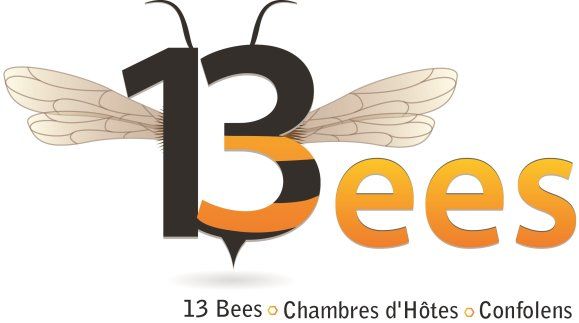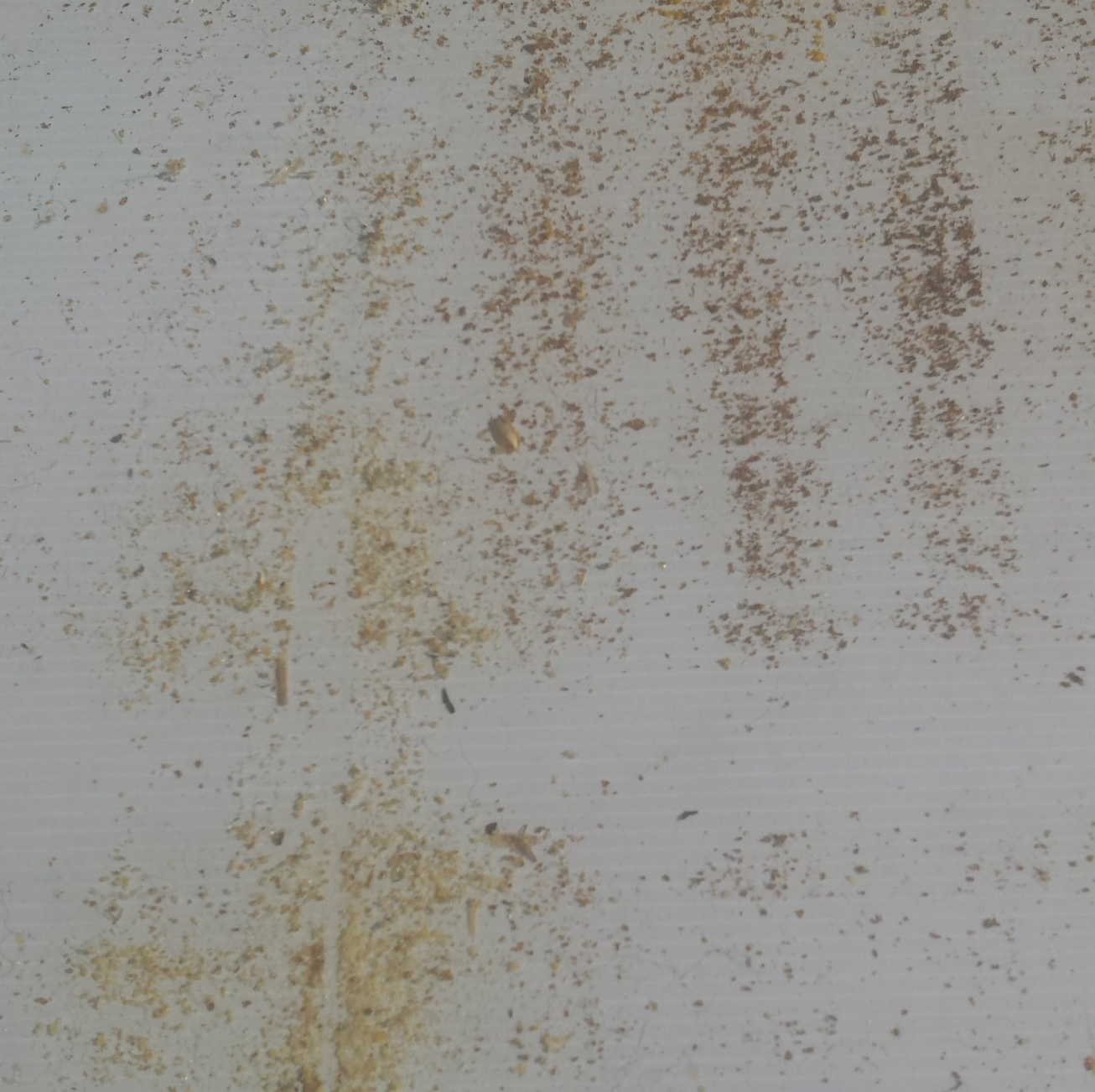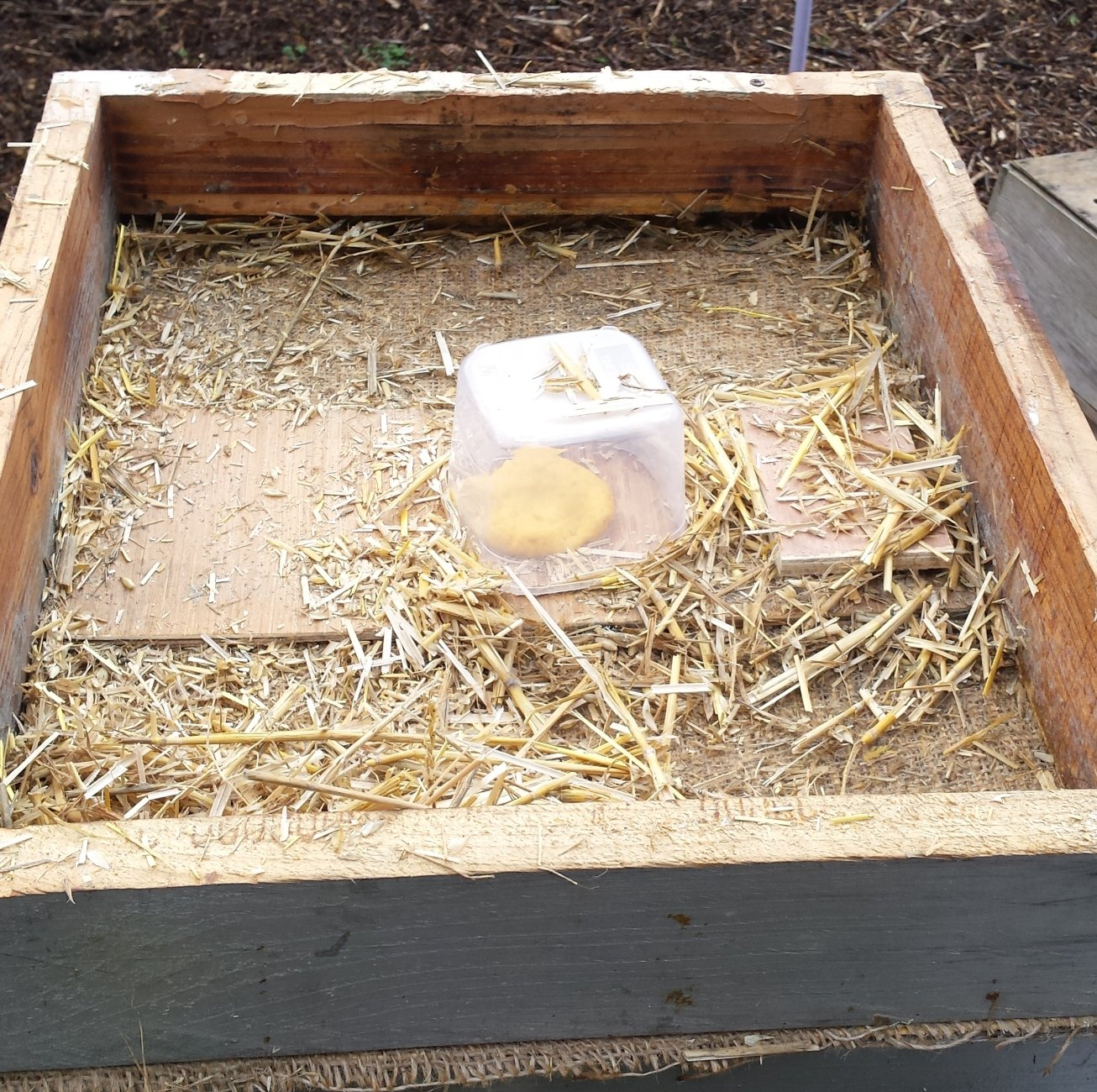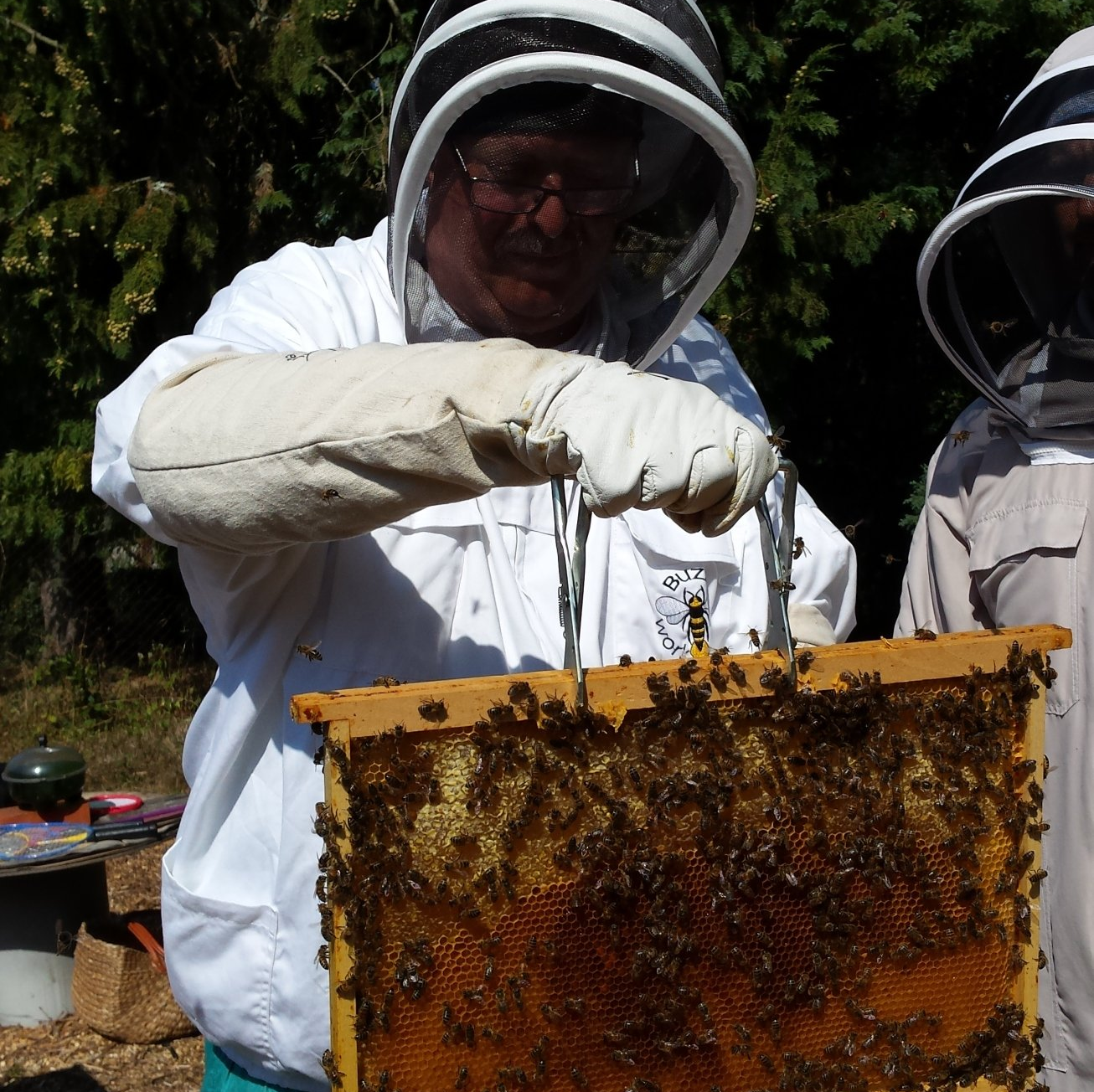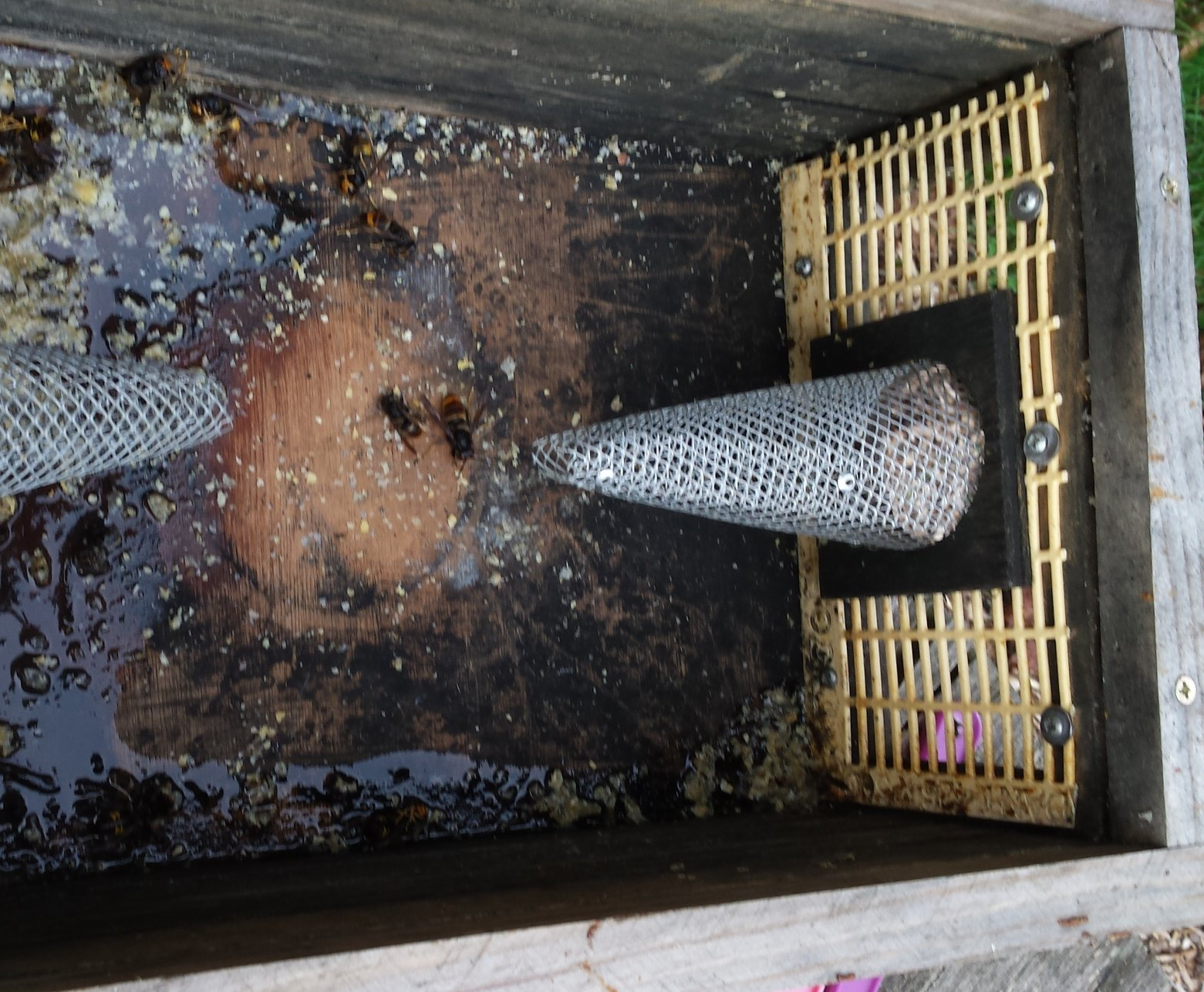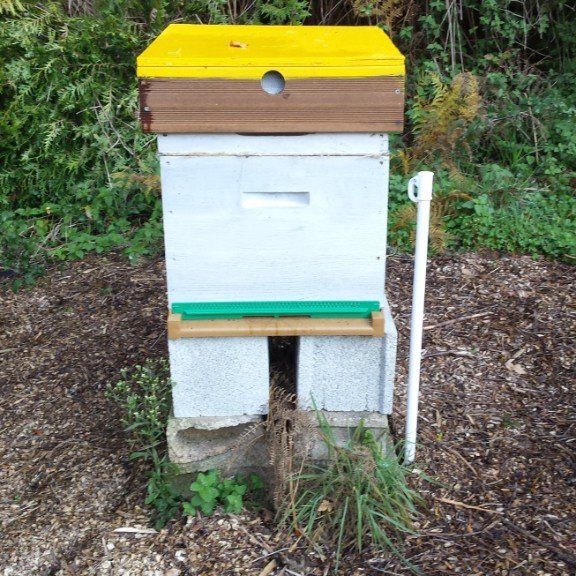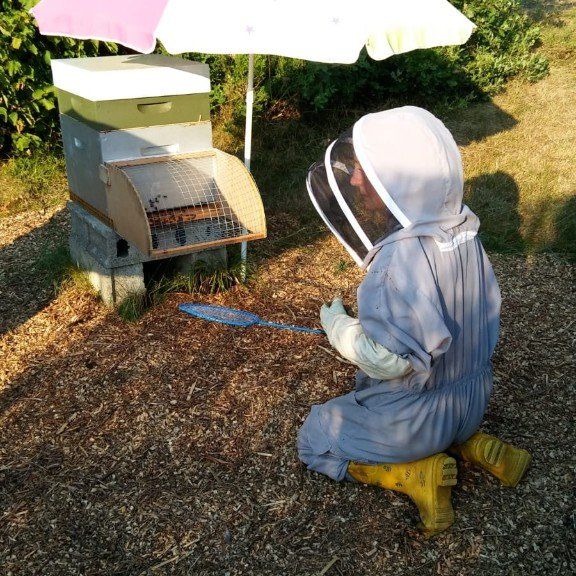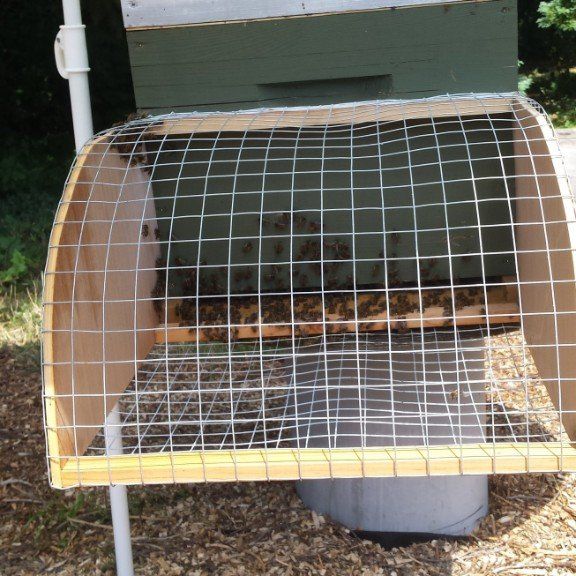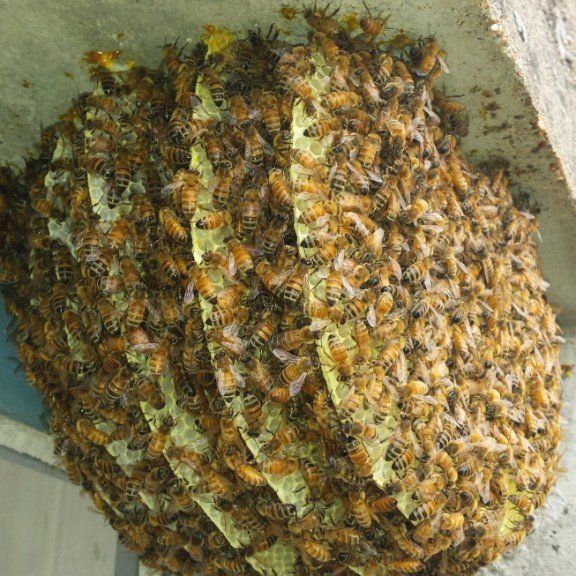Happy New Year!
- by Thirteen Bees
- •
- 09 Jan, 2017
- •
Treatment Time
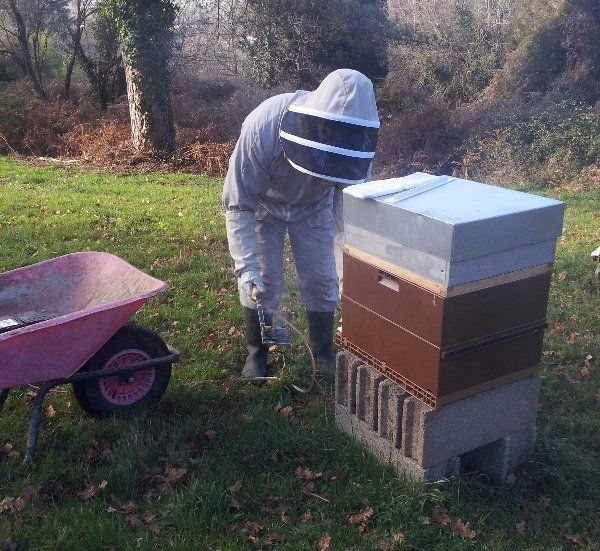
2017 already....! January is cold here in the Charente - lots of sunshine and frost, with consistent minus temperatures, the ideal conditions for treating our hives for varroa mite. Varroa destructor is a mite that breeds in sealed brood cells, feeding on the larval blood, and if it doesn't kill the developing larvae, it emerges with the hatching bee. Varroa can be tolerated by bees in small quantities, but they are dangerous to colonies in that they can trigger viruses that lead to serious deformations, such as shrivelled wings. Basically they are bad news for bees, and beekeepers the world over have to battle with this pest.
There are various treatments on the market, but because the mites breed in the sealed brood cells, they are almost impossible to reach until they hatch as adults and the damage is done. The ideal situation would be to dispose of them before they gain a foothold in the colony, and this is where the cold weather does us a favour. At this time of the year the bees are pretty much in 'lockdown', huddled together in their winter cluster, and the queen has stopped laying, or is only laying a few eggs instead of the thousands that she produces in the spring. This means that there is very little brood (eggs and larvae) so there is nowhere for the mite to breed. The only varroa in the hive are already on adult bees.
The most effective treatment is oxalic acid, a dangerous substance that bees can tolerate in small doses but which is fatal for varroa. Up until recently the application method was by trickling the acid over the frames, a difficult procedure which also means having to open the hive and potentially chilling the bees. Thankfully some bright sparks have developed a way of sublimating the acid powder i.e. heating it directly into a vapour which then re-solidifies as it cools. The vapour wafts its way through the hive, killing and dislodging the mite from the bees, and the cooled crystals are then cleaned out by the bees.
That's the theory....so yesterday, while others were out enjoying Sunday lunches, we donned our beekeeping suits and scary-looking respirators, and set off to the apiary with a 12 volt car battery, baggies containing carefully-measured doses of crystal powder and the W Heath Robinson-esque heating pan. Why the respirators? Well, oxalic acid is used to remove rust from engines, so it's not too good for lungs if breathed in...!
The process went without a hitch - the powder was put on the long-handled pan which was then inserted into the hive via the entrance, and the battery was connected. A foam barrier was placed in the entrance, and the pan was left in place for three minutes. Wisps of vapour emerged from the back of the hive, so we knew the sublimation part was working. The pan was then disconnected and removed and the entrance was blocked up again for around 10 minutes to allow the vapour to dissipate throughout the hive. This process was repeated for all five hives. We placed boards under each hive and a few hours later removed these to see what had dropped onto them. A few dead mites were apparent, which was good news on two counts - the only good mite is a dead mite, and the fact that there were only a few meant that our bees weren't too badly infected in the first place.
Smiles all round - plus we too survived the experience! Hopefully this means that our bees will emerge in a couple of months, healthy and raring to go. We're looking forward to seeing them again.
There are various treatments on the market, but because the mites breed in the sealed brood cells, they are almost impossible to reach until they hatch as adults and the damage is done. The ideal situation would be to dispose of them before they gain a foothold in the colony, and this is where the cold weather does us a favour. At this time of the year the bees are pretty much in 'lockdown', huddled together in their winter cluster, and the queen has stopped laying, or is only laying a few eggs instead of the thousands that she produces in the spring. This means that there is very little brood (eggs and larvae) so there is nowhere for the mite to breed. The only varroa in the hive are already on adult bees.
The most effective treatment is oxalic acid, a dangerous substance that bees can tolerate in small doses but which is fatal for varroa. Up until recently the application method was by trickling the acid over the frames, a difficult procedure which also means having to open the hive and potentially chilling the bees. Thankfully some bright sparks have developed a way of sublimating the acid powder i.e. heating it directly into a vapour which then re-solidifies as it cools. The vapour wafts its way through the hive, killing and dislodging the mite from the bees, and the cooled crystals are then cleaned out by the bees.
That's the theory....so yesterday, while others were out enjoying Sunday lunches, we donned our beekeeping suits and scary-looking respirators, and set off to the apiary with a 12 volt car battery, baggies containing carefully-measured doses of crystal powder and the W Heath Robinson-esque heating pan. Why the respirators? Well, oxalic acid is used to remove rust from engines, so it's not too good for lungs if breathed in...!
The process went without a hitch - the powder was put on the long-handled pan which was then inserted into the hive via the entrance, and the battery was connected. A foam barrier was placed in the entrance, and the pan was left in place for three minutes. Wisps of vapour emerged from the back of the hive, so we knew the sublimation part was working. The pan was then disconnected and removed and the entrance was blocked up again for around 10 minutes to allow the vapour to dissipate throughout the hive. This process was repeated for all five hives. We placed boards under each hive and a few hours later removed these to see what had dropped onto them. A few dead mites were apparent, which was good news on two counts - the only good mite is a dead mite, and the fact that there were only a few meant that our bees weren't too badly infected in the first place.
Smiles all round - plus we too survived the experience! Hopefully this means that our bees will emerge in a couple of months, healthy and raring to go. We're looking forward to seeing them again.


